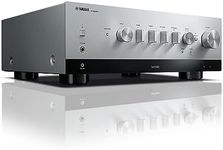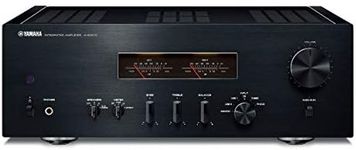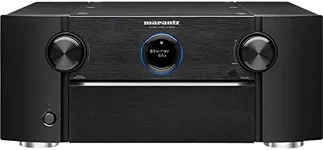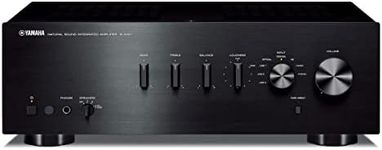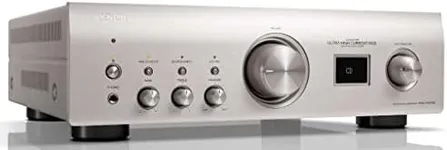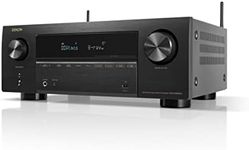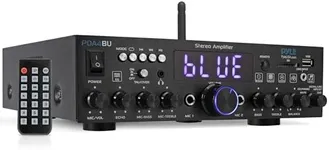Buying Guide for the Best Stereo Amplifiers
Choosing the right stereo amplifier can significantly enhance your audio experience. A stereo amplifier is a device that amplifies audio signals from your source (like a CD player or turntable) and drives your speakers. When selecting a stereo amplifier, it's important to consider several key specifications to ensure it meets your needs and preferences. Understanding these specs will help you make an informed decision and find the best fit for your audio setup.Power OutputPower output, measured in watts per channel, indicates how much power the amplifier can deliver to your speakers. This spec is crucial because it affects the volume and clarity of the sound. Generally, amplifiers with higher wattage can drive larger speakers and produce louder sound. If you have small speakers or listen at moderate volumes, an amplifier with lower wattage (20-50 watts per channel) may suffice. For larger rooms or more demanding speakers, look for amplifiers with higher wattage (100+ watts per channel). Consider your listening environment and speaker specifications to determine the appropriate power output.
ImpedanceImpedance, measured in ohms, refers to the resistance the amplifier encounters when driving your speakers. Most home audio speakers have an impedance of 4, 6, or 8 ohms. It's important to match the amplifier's impedance rating with your speakers to ensure optimal performance and avoid damage. Amplifiers typically support a range of impedances, so check the compatibility with your speakers. If you have speakers with lower impedance (4 ohms), ensure the amplifier can handle it without overheating or distortion. For higher impedance speakers (8 ohms), most amplifiers will work efficiently.
Total Harmonic Distortion (THD)Total Harmonic Distortion (THD) measures the purity of the amplified sound, indicating how much the signal is altered during amplification. Lower THD values mean cleaner and more accurate sound reproduction. THD is usually expressed as a percentage, with values below 1% considered good. For audiophiles seeking high-fidelity sound, look for amplifiers with THD below 0.1%. If you're less concerned about perfect sound quality, higher THD values (up to 1%) may be acceptable. Consider your preference for sound clarity when evaluating THD.
Signal-to-Noise Ratio (SNR)Signal-to-Noise Ratio (SNR) measures the level of the desired audio signal compared to background noise. A higher SNR indicates clearer sound with less noise interference. SNR is measured in decibels (dB), with values above 80 dB considered good. For critical listening and high-quality audio, aim for amplifiers with SNR above 100 dB. If you're using the amplifier for casual listening, values around 80-90 dB may be sufficient. Your choice should depend on how much background noise you can tolerate in your audio experience.
Connectivity OptionsConnectivity options refer to the types of inputs and outputs available on the amplifier. Common connections include RCA, optical, coaxial, and Bluetooth. These options determine how you can connect your audio sources and speakers. If you have multiple devices (like a turntable, CD player, and smartphone), ensure the amplifier has enough inputs to accommodate them. Bluetooth connectivity is useful for wireless streaming from mobile devices. Consider your current and future audio setup to choose an amplifier with the necessary connectivity options.
Size and DesignSize and design are important for fitting the amplifier into your space and matching your aesthetic preferences. Amplifiers come in various sizes, from compact models to larger units. Consider the available space in your audio setup and choose an amplifier that fits comfortably. Design elements like color, finish, and control layout can also impact your choice. If you prefer a minimalist look, opt for a sleek and simple design. For a more traditional setup, choose an amplifier with classic styling. Your personal taste and room decor should guide your decision.

